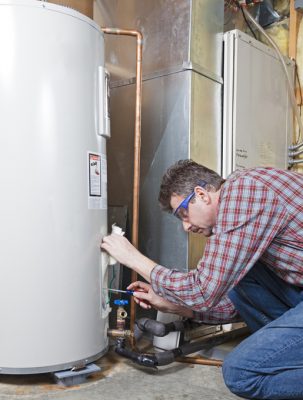Tips on How to Keep Your Home's Hot Water System Functioning Well
Tips on How to Keep Your Home's Hot Water System Functioning Well
Blog Article
We've stumbled on this post about How to Maintain Your Water Heater & Prolong its Life down the page on the internet and accepted it made sense to write about it with you on this page.

Hot water is essential for day-to-day convenience, whether it's for a refreshing shower or cleaning dishes. To guarantee your hot water system runs successfully and lasts longer, regular upkeep is key. This short article gives functional tips and understandings on how to preserve your home's hot water system to prevent disturbances and expensive fixings.
Introduction
Preserving your home's hot water system may appear difficult, yet with a few straightforward steps, you can guarantee it runs smoothly for many years to come. This overview covers every little thing from comprehending your warm water system to DIY upkeep pointers and understanding when to call professional help.
Value of Keeping Your Hot Water System
Regular maintenance not only prolongs the life-span of your warm water system yet also ensures it operates efficiently. Overlooking upkeep can cause lowered performance, greater power costs, and also premature failure of the system.
Signs Your Hot Water System Needs Upkeep
Understanding when your warm water system needs interest can protect against significant issues. Watch out for indications such as irregular water temperature level, strange sounds from the heater, or rusty water.
Flushing the Hot Water Heater
Purging your hot water heater removes sediment buildup, enhancing effectiveness and lengthening its life.
Monitoring and Changing Anode Rods
Anode rods prevent rust inside the storage tank. Checking and changing them when worn out is essential.
Complex Problems Needing Expert Assistance
Instances consist of significant leakages, electric troubles, or if your hot water heater is continually underperforming.
Regular Specialist Upkeep Conveniences
Specialist upkeep can consist of detailed inspections, tune-ups, and ensuring conformity with security requirements.
Checking and Changing Temperature Level Settings
Readjusting the temperature level setups makes sure ideal efficiency and security.
DIY Tips for Maintenance
You can perform numerous upkeep jobs on your own to keep your hot water system in leading problem.
Checking for Leakages
On a regular basis examine pipelines and connections for leakages, as these can cause water damage and greater expenses.
Understanding Your Warm Water System
Before diving right into maintenance jobs, it's practical to understand the standard elements of your hot water system. Normally, this includes the hot water heater itself, pipes, anode poles, and temperature level controls.
Monthly Upkeep Tasks
Regular month-to-month checks can help capture minor concerns prior to they intensify.
Testing Stress Alleviation Valves
Checking the pressure relief valve ensures it operates appropriately and stops excessive pressure build-up.
Protecting Pipelines
Protecting warm water pipes minimizes heat loss and can conserve power.
When to Call an Expert
While do it yourself maintenance is helpful, some issues require specialist competence.
Verdict
Routine maintenance of your home's warm water system is essential for performance, longevity, and price financial savings. By following these ideas and recognizing when to seek expert aid, you can ensure a trustworthy supply of warm water without unforeseen disturbances.
How to Maintain an Instant Hot Water Heater
Before tinkering with your hot water heater, make sure that it’s not powered on. You also have to turn off the main circuit breaker and shut off the main gas line to prevent accidents. Also turn off the water valves connected to your unit to prevent water from flowing into and out of the appliance. 2. When you’re done, you have to detach the purge valves’ caps. These look like the letter “T†and are situated on either side of the water valves. Doing so will release any pressure that has accumulated inside the valves while at the same time avoid hot water from shooting out and burning your skin. 3. When the purge valves’ caps are removed, you have to connect your hosing lines to the valves. Your unit should have come with three hoses but if it didn’t, you can purchase these things from any hardware or home repair shops. You can also get them from retail stores that sell water heating systems. Read the user’s manual and follow it to complete this task properly. When the hosing lines are connected, open the purge port’s valves. 4. You should never use harsh chemical cleaners or solutions when cleaning your unit. Make use of white vinegar instead. It should be undiluted and you’ll probably use about 2 gallons. 5. Now flush your water heater. This task should probably take about 40 minutes. We can’t give you specific directions for this because the procedure is carried out depending on the type, model and brand of your heater. With that being said, refer to the user’s manual. 6. When you’re done draining the unit, you have to turn off the purge port valves again. Remove the hosing lines that you earlier installed on each of the water valves. Put the valve caps (purge port) back in their respective places and be very careful so as not to damage the rubber discs that are found inside these caps. 7. Now that everything’s back in place, check your user’s manual again to find out how to reactivate your water heating system. 8. Once it is working, turn one of your hot water faucets on just to let air pass through the heater’s water supply pipes. Leave the tap on until water flows smoothly out of it. https://www.orrplumbing.com/blog/2014/september/how-to-maintain-an-instant-hot-water-heater/

As a person who reads on Tips For Maintaining Your Hot Water Heater, I imagined sharing that section was mandatory. For those who liked our page kindly consider to pass it around. We appreciate reading our article about How to Maintain Your Water Heater & Prolong its Life.
Call Today Report this page